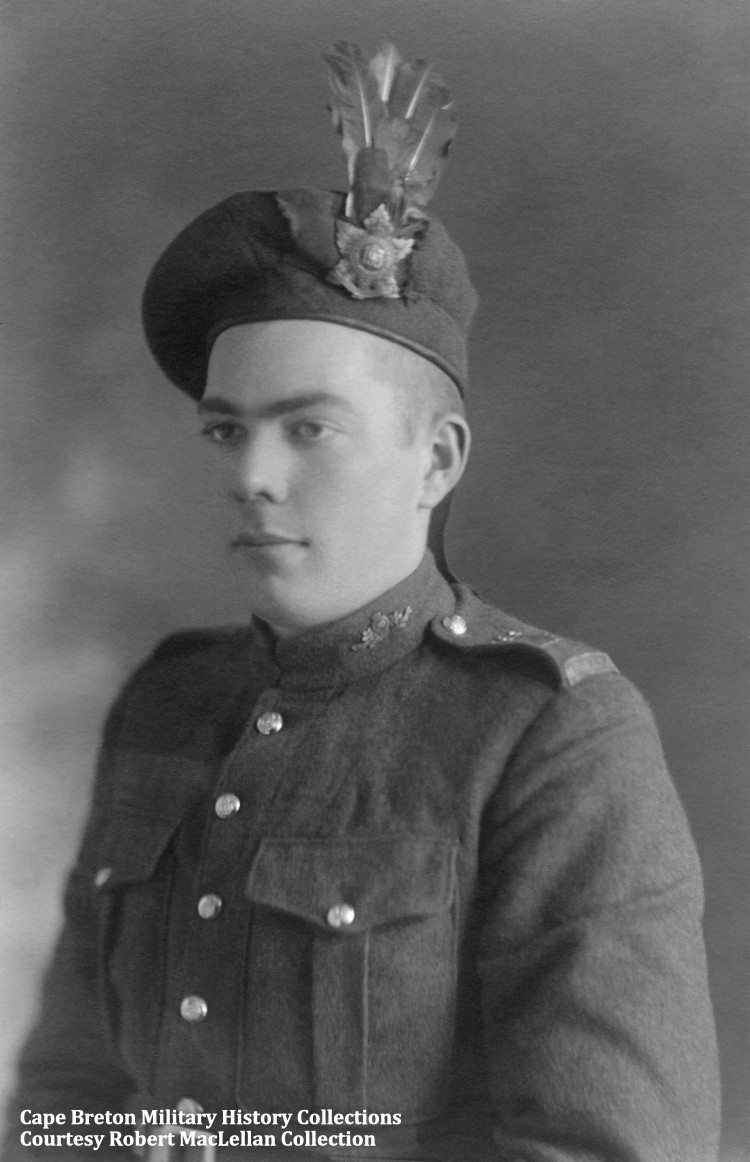Theme Collections
193rd Battalion (Nova Scotia Highlanders)
Photos and Photo Postcards - WW1 - General
Studio Portrait Photo
This section contains one studio portrait photo of Pte. Harry Irvine Taylor of the 193rd Battalion, circa 1916-1917.
Click or tap on the image below for a high resolution, expandable image. Use your back button to return to this page.
Pte. Harry Irvine Taylor
193rd Battalion (Nova Scotia Highlanders) CEF
Circa 1916-1917
Pte. Taylor poses for a studio portrait photo. He wears a balmoral with a clearly visible 193rd Battalion cap badge with full length feathers. One 193rd Battalion collar badge is visible and one 193rd Battalion numbered shoulder strap title is partially visible. The photo was taken in either Nova Scotia before he went overseas or in England shortly after he arrived.
Photographer: Unknown
Ref. Number: 0-4 (20-1-2-1.3)
Image Information: Scan of of original photo postcard
Source: Robert MacLellan Collection
_________________________________________
Short Biography and Record of Service
Pte. Harry Irvine Taylor
Service Number 901221
Died July 19, 1921
Harry Irvine Taylor was born and raised in the small community of East Apple River located on the Chignecto Peninsula, near the Bay of Fundy coast, in Cumberland County, NS. Born on July 25, 1897, he was the son of Edgar B. and Ella Jane (Berry) Taylor. On March 15, 1916, in Truro, NS, Harry enlisted as a private in the 193rd Battalion (Nova Scotia Highlanders). He was a student living in Truro.
At the time of his enlistment, the 193rd Battalion was headquartered in Truro. Two months later, the battalion relocated to the large pre-war military training camp at Aldershot, NS, where they united with their three sister battalions of the newly formed Nova Scotia Highland Brigade. The four battalions trained together at Aldershot throughout the summer and early fall. In early October, the whole brigade entrained for Halifax, where they boarded the troopship RMS Olympic, sister ship of the Titanic, and on October 13, 1916, set sail for England.
After disembarking in England, the men were established at Witley Camp in southern England. Word soon arrived that the Nova Scotia Highland Brigade would be dissolved. Two of the battalions, including Harry’s 193rd Battalion, were to be broken up with the men to be used for reinforcements for other Canadian units. As a result, on December 29, 1916, Harry was transferred to the 185th Battalion (Cape Breton Highlanders) who were also at Witley Camp. The battalion was one of the four battalions of the former Nova Scotia Highland Brigade and was still earmarked to cross the channel as a unit. The 185th Battalion trained in England throughout 1917 but in early 1918, they were also ordered to be disbanded to provide badly needed reinforcements for Canadian units already at the front.
It was around this time that Harry became ill. On February 18, 1918, He was admitted to the 12th Canadian General Hospital in Bramshott. With the 185th Battalion being disbanded, he was transferred to the 17th Reserve Battalion also stationed at Bramshott, and later to the Nova Scotia Regiment Depot. Harry’s illness worsened and he became seriously ill with pneumonia and pleurisy. He spent nearly six months in hospital recovering from his illness. In June, 1918, a diagnosis of debility, general weakness due to his illness, was changed to bronchitis. A medical board found him unfit for further military service and he was invalided back to Canada in late September. He was hospitalized again in Halifax, NS, before being discharged from the army on December 6, 1918.
Harry Taylor passed away in Kentville, NS, on July 19, 1921, at the age of 23. He was laid to rest in Advocate Cemetery in Advocate Harbour, Cumberland County, NS.
